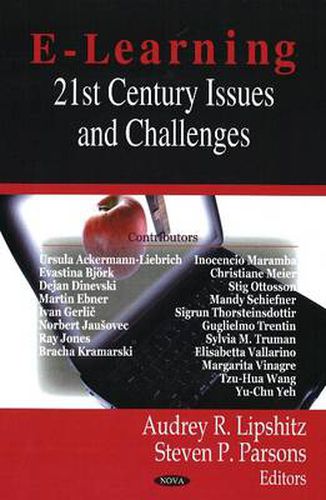Readings Newsletter
Become a Readings Member to make your shopping experience even easier.
Sign in or sign up for free!
You’re not far away from qualifying for FREE standard shipping within Australia
You’ve qualified for FREE standard shipping within Australia
The cart is loading…






Electronic learning or E-learning is a general term used to refer to computer-enhanced learning. It is used interchangeably in so many contexts that it is critical to be clear what one means when one speaks of ‘eLearning’. In many respects, it is commonly associated with the field of advanced learning technology (ALT), which deals with both the technologies and associated methodologies in learning using networked and/or multimedia technologies. By 2003, more than 1.9 million students were participating in on-line learning at institutions of higher education in the United States alone. Many higher education for-profit institutions, now offer on-line classes. By contrast, only about half of private, non-profit schools offer them. The Sloan report, based on a poll of academic leaders, says that students generally appear to be at least as satisfied with their on-line classes as they are with traditional ones. Private institutions may become more involved with on-line presentations as the cost of instituting such a system decreases. Properly trained staff must also be hired to work with students on-line. These staff members must be able to not only understand the content area, but also be highly trained in the use of the computer and Internet. Online education is increasing dramatically around the world. This book presents the latest research in the field.
$9.00 standard shipping within Australia
FREE standard shipping within Australia for orders over $100.00
Express & International shipping calculated at checkout
Electronic learning or E-learning is a general term used to refer to computer-enhanced learning. It is used interchangeably in so many contexts that it is critical to be clear what one means when one speaks of ‘eLearning’. In many respects, it is commonly associated with the field of advanced learning technology (ALT), which deals with both the technologies and associated methodologies in learning using networked and/or multimedia technologies. By 2003, more than 1.9 million students were participating in on-line learning at institutions of higher education in the United States alone. Many higher education for-profit institutions, now offer on-line classes. By contrast, only about half of private, non-profit schools offer them. The Sloan report, based on a poll of academic leaders, says that students generally appear to be at least as satisfied with their on-line classes as they are with traditional ones. Private institutions may become more involved with on-line presentations as the cost of instituting such a system decreases. Properly trained staff must also be hired to work with students on-line. These staff members must be able to not only understand the content area, but also be highly trained in the use of the computer and Internet. Online education is increasing dramatically around the world. This book presents the latest research in the field.